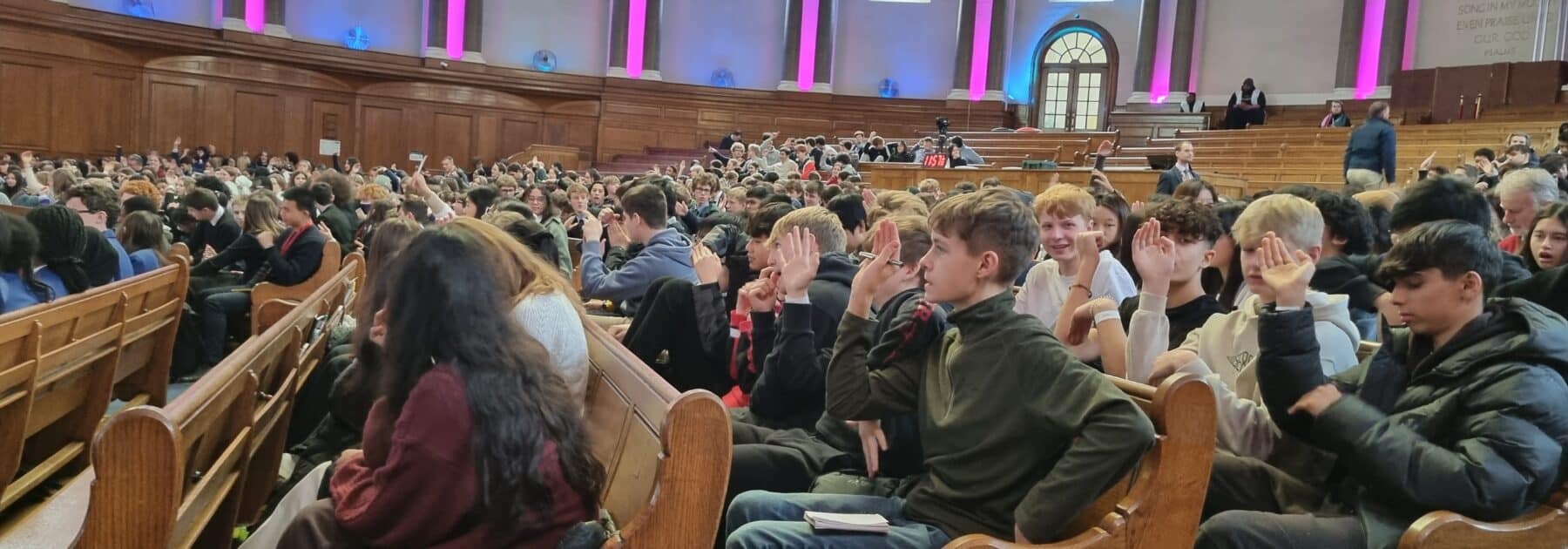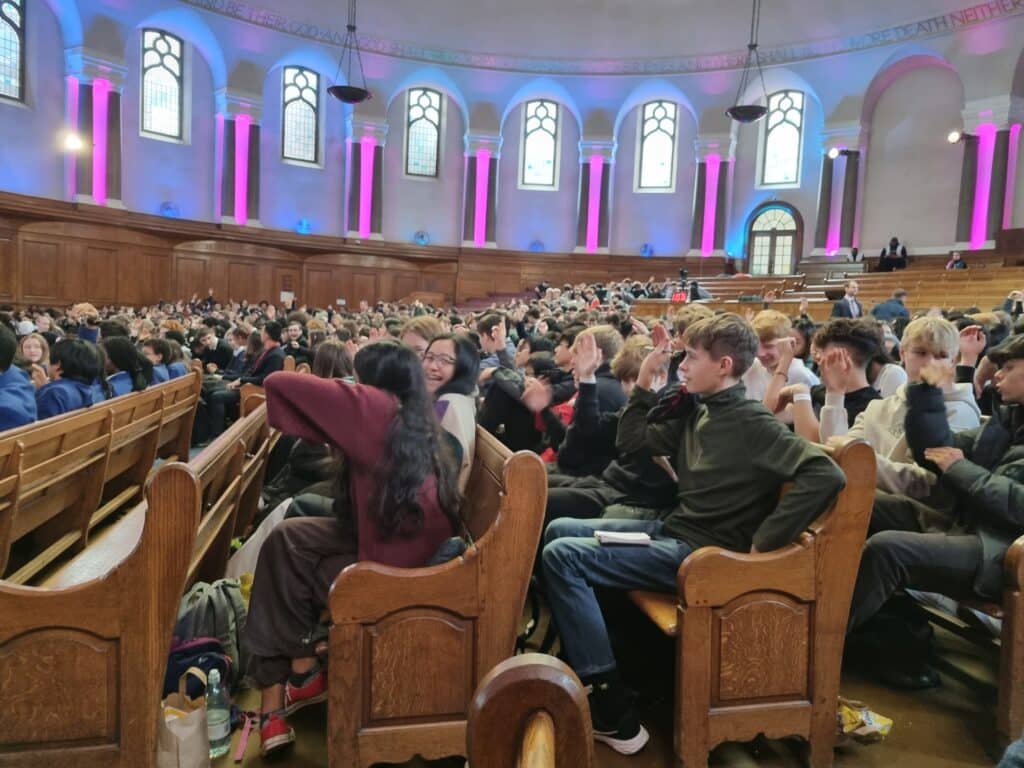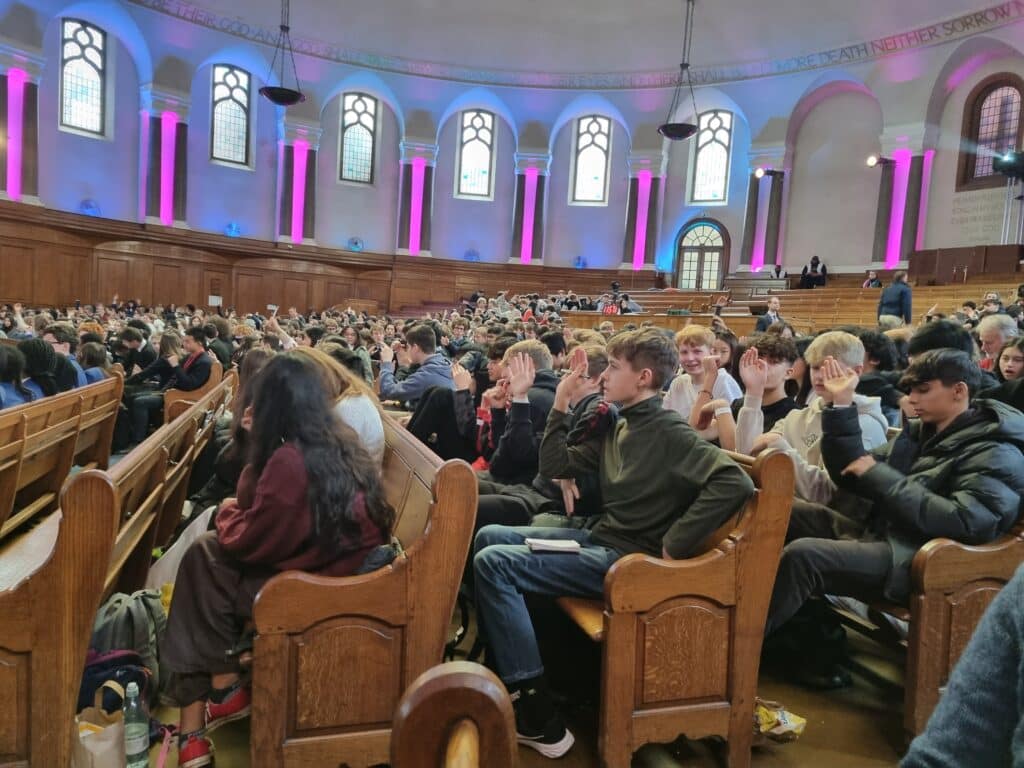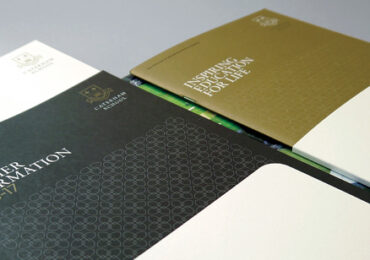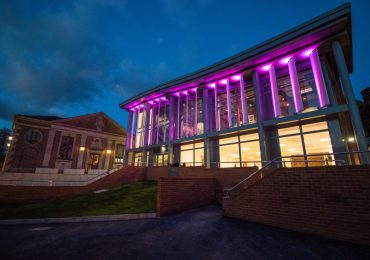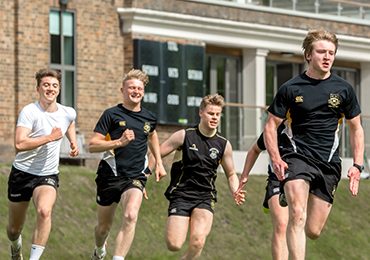Insight for Fourth Year Mathematicans at Maths in Action
Last Friday, some of our Fourth Year mathematicians travelled to the Emmanuel centre, near Westminster. Our first lecture began promptly at 10.50am and communicator Sophie Maclean provided us with an insight into the world of prime numbers. She demonstrated various types of prime numbers (Mersenne and Sophie Germain primes) and presented to us G.I.M.P.S. (Great internet Mersenne prime search), an internet organisation that has been setting world records for the largest prime numbers since its establishment in 1996 by using the equation used to find Mersenne primes.
Matthew Scroggs was our next speaker and he highlighted how essential it is for companies to use polynomials to find approximate values when they want to save money where they can. Non-polynomials are numbers like: x^-2, x^0.5,√x, sin(x), 2^x. Polynomials are numbers like: x, x^2, 5, 2x^2, π, 0.5x. Polynomials are typically a lot easier to use. He finished off his talk with “Runge’s phenomenon”, too complicated to go into detail here but in short it is a problem of oscillation when adding interpolation points, resulting in a loss of accuracy.
None other than the chair, Matt Prichard, gave our next talk about magic in maths. He started with a shape known as a hexahexaflexagon, a six faced, six sided shape. Matt Prichard is passionate about the art of illusion and shared a plethora of them with us, baffling our minds but giving us an appetite for more. After lunch, we were given a session regarding the luck involving maths and to what extent it is true that you are more likely to be struck by lightning (1/33,000) than to win the lottery (≈1/45,000,000). In terms of statistics, this is true but there are far more factors involved in being struck by lightning like if it is the right conditions for lightning and I definitely can’t imagine being struck by lightning if I was indoors.
Thanks to Ms Parker, Mr Todd and Dr Kemp for making this spectacular day possible.


